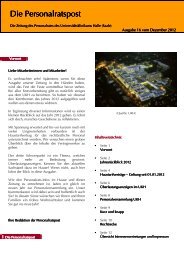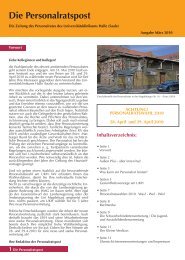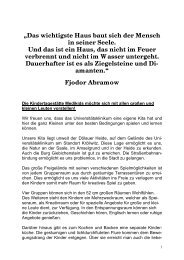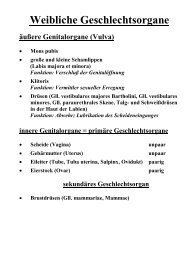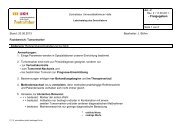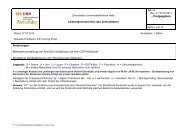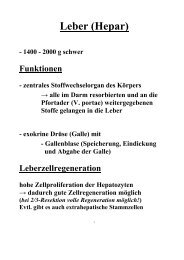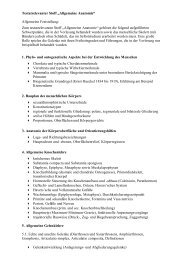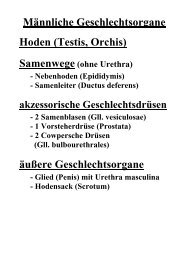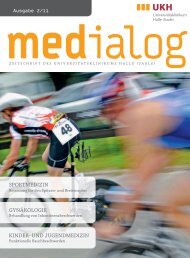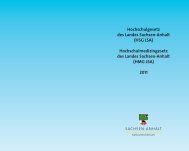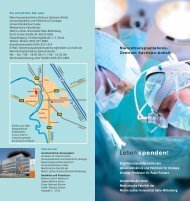Hallesche Beiträge zu den Gesundheits- und Pflegewissenschaften
Hallesche Beiträge zu den Gesundheits- und Pflegewissenschaften
Hallesche Beiträge zu den Gesundheits- und Pflegewissenschaften
Create successful ePaper yourself
Turn your PDF publications into a flip-book with our unique Google optimized e-Paper software.
context. Nothing according to Anselm’s way of thinking was simply black and white.Life to him was complex and it was important to him that analysts capture as much ofthat complexity as possible in their research. Since line by line analysis involves examiningdetails through a multicolored lens is there any wonder why it was so important toAnselm’s way of thinking?It was a joy to watch Anselm at work, to work with him. He had such a seminal mindand would draw upon his stored knowledge to gain insight and <strong>und</strong>erstanding into newsituations. It was amazing to see what he could do analytically with one little phraseor paragraph. From a few words he would generate so many questions and thoughts,ideas to be followed up on through theoretical sampling or that gave new insight intodata. For example we were doing a study on head nurses and the articulation of work inhospitals. We had been analyzing data for months but somehow the concept of powerhad never surfaced. It may have been there but we were too insensitive to notice. Thenone day, we coded an inci<strong>den</strong>t as power. Then we went to work on the concept of power,what does it mean here, who has power, how does it manifest itself, and so on. We wereexploring power as one would a brilliant cut diamond, examining its many facets andmanifestations. In this way we were increasing our sensitivity so that when we wentback to the data, inci<strong>den</strong>ts that we never before coded as power jumped off the page. Butthey didn’t jump out at us until we had developed this sensitivity by thinking about andplaying with the concept of power. Is this process of working with data something thatone would consider »forcing«? I think not, but like everything else that has to do withanalysis, it is all a matter of definition and interpretation.What were the analytic techniques that Anselm used to dig beneath the surface of data?Mine it like gold, as he would say. I’d like to explain some of those techniques.1. The first is the making of comparisons, meaning that an inci<strong>den</strong>t is comparedagainst another inci<strong>den</strong>t in order to determine if these are conceptually the same.Those that are similar are grouped together.2. The second is the asking of generative questions. To name a few, questions suchas what is going on here; also who, what, where, when, how come, how, withwhat consequences. Anselm always said »Any question that helps to i<strong>den</strong>tify or<strong>und</strong>erstand a concept is a good question.«3. The making of theoretical comparisons. This is where Anselm excelled. Doingtheoretical comparisons involves working with concepts, not descriptive material.I would describe making theoretical comparisons something akin to brainstorming.Once there is a concept, such as »making arrangements« one draws upon life experienceor the literature in order to try to uncover the meaning of this concept anddiscover possible properties and dimensions. For example if one were studyingnurses working in an intensive care unit and one came upon the phrase »she wasexperienced nurse« the analyst might want to know what is meant by »an experiencednurse«. Suppose the information is not forthcoming in the data. It may bethere but somehow the analyst is blocked and not seeing it. So the analyst startsJ. M. Corbin (2004): Forcing Vs. Emergent: Line by Line Analysis<strong>Hallesche</strong> <strong>Beiträge</strong> <strong>zu</strong> <strong>den</strong> <strong>Ges<strong>und</strong>heits</strong>- <strong>und</strong> <strong>Pflegewissenschaften</strong>, 3. Jahrgang, Heft 1Seite 4



